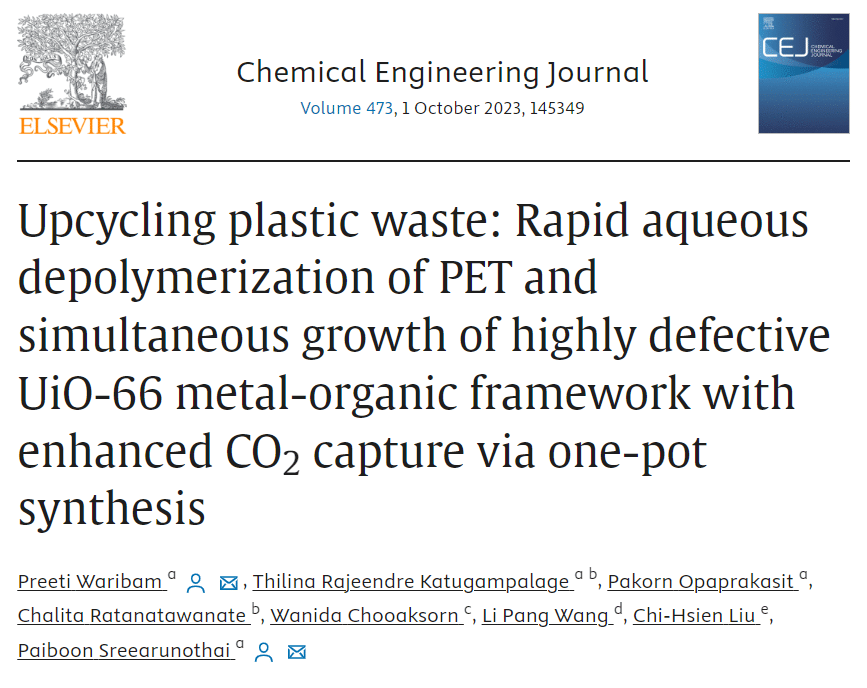Abstract
UiO-66(Zr) MOF was synthesized rapidly via one-pot synthesis in an acidic aqueous media starting with waste polyethylene terephthalate (PET) plastic flakes and Zr metal salt. Complete depolymerization of PET into BDC (benzene dicarboxylic acid) linkers and coordination with Zr metal clusters occurred in 30 mins under microwave irradiation. PET-derived UiO-66 showed a large micron-sized cuboctahedron crystal structure with high microporosity. The use of acetic acid as a modulator helps to increase the reo–topology defect within the MOFs improving CO2 uptake. PET-derived UiO-66 exhibited intense reo-defects than UiO-66 synthesized using a pristine BDC linker. This was likely due to the one-pot reaction of PET depolymerization with simultaneous MOF growth that results in an enhanced competition of modulator and byproducts formed during PET digestion along with the BDC to bind with Zr clusters inducing more defects in the structure. Heat treatment of the PET-derived UiO-66 with the optimal mole ratio of 1Zr:1PET yields UiO-66 with the highest BET surface area of 1200 m2g−1 and a total pore volume of 0.57 cm3g−1. The highest CO2 uptake of 2.06 mmolg−1 was shown by 1Zr:1PET, due to their high microporosity and profound reo-structure which demonstrated superior CO2 uptake than the UiO-66 synthesized using commercial BDC. The selectivity of the CO2 over N2 was over 25.3 times and exhibited excellent regeneration stability and recyclability over 5 cycles with 99% of persistent CO2 sorption capacity. This study demonstrated the utilization and recycling of PET waste to BDC linkers with simultaneous MOF growth which have a high potential to capture CO2 effectively.


